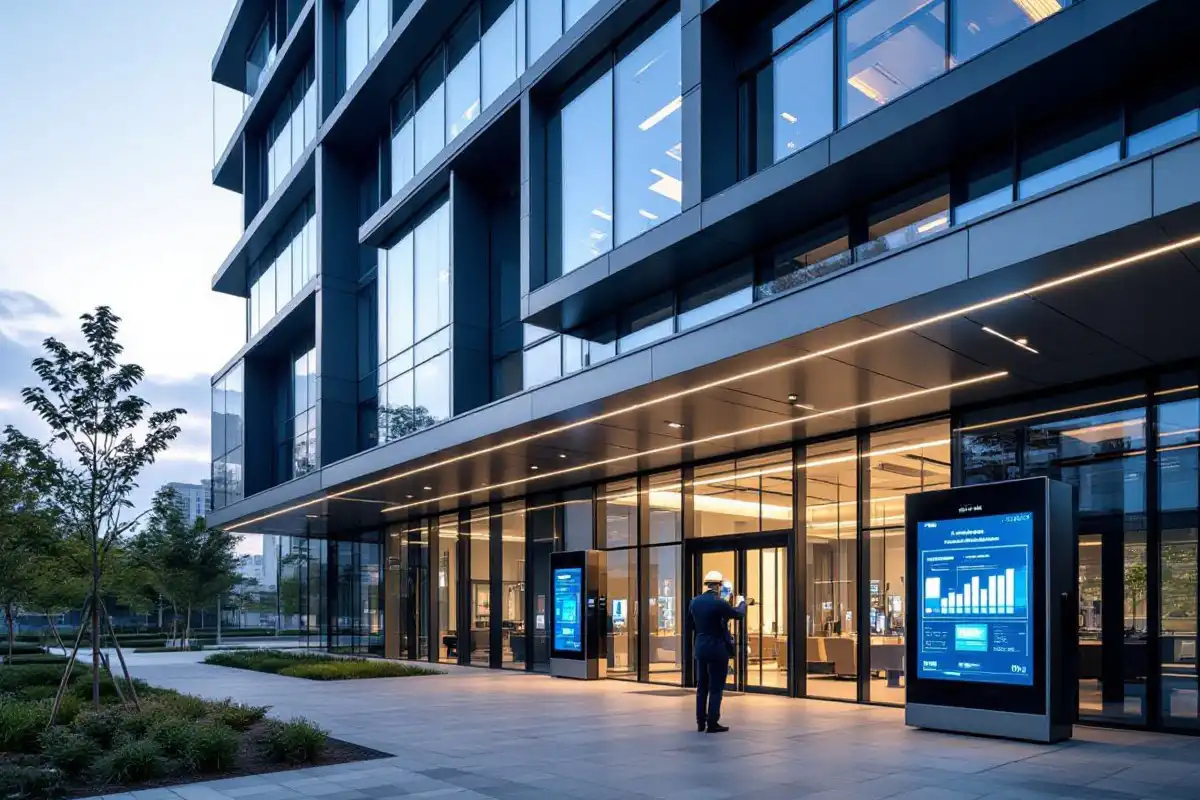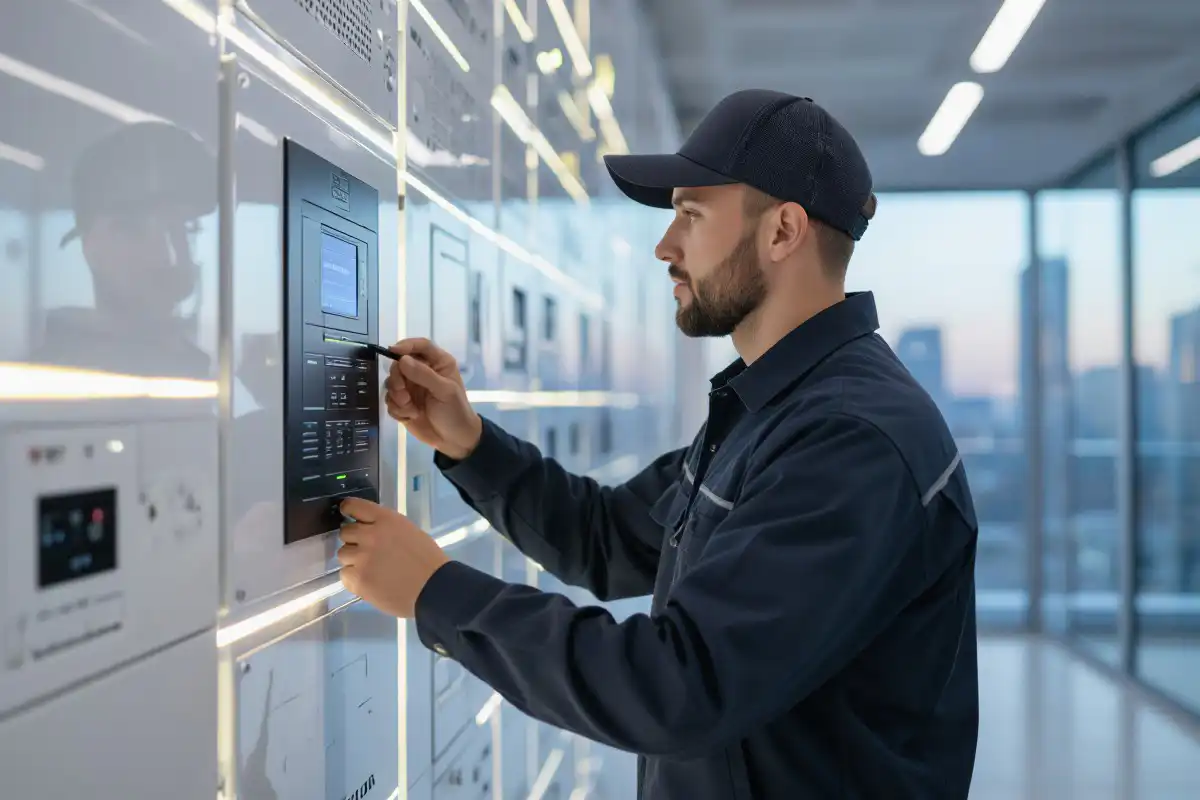
Smart building technology has become the new baseline for commercial construction. In 2026, owners and developers expect electrical contractors not only to install infrastructure, but to understand how that infrastructure integrates with analytics, energy optimization, automation, cybersecurity, and occupant experience systems. And because smart building performance is now tied to financing, ESG reporting, leasing appeal, and long-term operating costs, contractors are increasingly evaluated through smart building certifications.
These certifications validate that a contractor understands the technological layer behind the physical installation and can support a building’s digital functionality throughout its lifecycle. They are becoming a major differentiator during prequalification, bid scoring, and design-assist selection.
| Without Certifications | With Smart Building Certifications |
|---|---|
| Competes on price | Competes on expertise |
| Hired as labor | Engaged as a technology partner |
| Brought in late | Invited in at design |
| Narrow scope | Expanded scope and lifecycle value |
| Lower margins | Higher-margin work |
Why Smart Building Certifications Matter in 2026
Smart buildings now function as data platforms
Modern buildings no longer operate as static infrastructure. They generate ongoing system performance data - energy, occupancy, wellness, asset health, sustainability - which requires integrated thinking across power, low-voltage, controls, IoT, and metering. Certification signals capability in these areas.
ESG-linked construction requirements
Developers, REITs, universities, healthcare systems, and municipalities increasingly need certified building outcomes tied to ESG reporting. If a contractor cannot speak certification frameworks, they are eliminated before price is considered.
Lifecycle value has replaced one-time installation
Owners now expect performance and verifiable return on infrastructure decisions. Contractors who understand certification frameworks earn design-assist roles, commissioning scope, and ongoing technical service contracts - not just installation labor.

Core Smart Building Certifications for Electrical Contractors
SmartScore
SmartScore evaluates how well a building uses technology to deliver efficiency, sustainability, tenant experience, and building intelligence. For electrical contractors, SmartScore training demonstrates the ability to tie infrastructure to actual building outcomes. Contractors contribute to backbone electrical and low-voltage design, sensor pathways, controls readiness, power-to-data alignment, and cyber-aware infrastructure design.
WiredScore
WiredScore certifies a building’s digital backbone and connectivity resiliency. It is highly relevant for contractors expanding into low-voltage and technology infrastructure scopes. Areas of contribution include fiber readiness, riser design, telecom room planning, pathway redundancy, power continuity for network infrastructure, and future-proofing for upgrades.
SPIRE (UL + TIA)
SPIRE is the most comprehensive smart building performance framework, evaluating connectivity, life safety, health, energy, cybersecurity, and sustainability. Contractors with SPIRE capability move beyond installation into advisory and commissioning roles. Some pursue SPIRE Assessor status to provide evaluation services directly to owners.
buildingSMART / openBIM
This credential certifies people and firms in open BIM standards, enabling clean digital coordination. Electrical contractors use buildingSMART to support digital twins, interoperability, and lifecycle traceability. It is especially valuable during design-assist, final documentation handoff, and long-term service relationships.
Sustainability and Wellness Certifications That Strengthen Smart Building Bids
LEED
LEED remains the best-known sustainability credential in the U.S. Electrical contractors influence energy use, lighting systems, controls, and metering - core LEED performance drivers.
WELL Building Standard
WELL focuses on occupant experience, air quality, lighting quality, and environmental controls. Smart-ready infrastructure is foundational to WELL outcomes, making electrical contractors a major contributor behind the scenes.
BREEAM and Green Globes
The BREEAM frameworks often apply to institutional and public buildings and help contractors qualify for sustainability-scored procurement.
Living Building Challenge
The most demanding sustainability program, requiring regenerative performance. Contractors who understand smart metering and energy flow monitoring have unique leverage here.
Which Certifications Matter by Project Type
| Project Type | Most Relevant Certifications |
|---|---|
| Class A Office | SmartScore + WiredScore + LEED |
| Healthcare | SPIRE + WELL |
| Multifamily | WiredScore + WELL |
| University / Government | SPIRE + LEED + openBIM |
| Industrial | SPIRE + infrastructure readiness |
| Retrofits | SmartScore + openBIM |
Skills Owners Expect Alongside Certification
- Cyber-aware electrical infrastructure
- Demand-response and grid-interactive readiness
- Data visibility through metering and sensors
- Integration of PoE and low-voltage lighting
- EV and electrification tie-in capability
Certification signals knowledge, but documentation is what proves capability.
The #1 Barrier Contractors Face: Documentation Gaps
Most contractors don’t lose smart building opportunities on price - they lose them before pricing because they cannot show traceability, commissioning readiness, digital coordination, or lifecycle documentation. Procurement teams now expect process visibility, not just trade skill.
How to Operationalize Smart Building Certifications
- Select a certification sequence: Most firms begin with WiredScore, then pursue SmartScore, then SPIRE.
- Train the right roles: Start with a PM, foreman, or service lead before training the entire field staff.
- Standardize documentation: Certification credibility requires clearly logged what/where/how/why.
- Connect documentation to lifecycle value: Owners award repeat work when contractors demonstrate long-term accountability.
Many contractors streamline this part of the process using electrical contractor software built for certification-ready documentation workflows, helping them standardize commissioning logs and lifecycle traceability.
Contractor Success Story
A mid-sized electrical contractor in the Midwest averaged $150K–$400K interior fit-out projects but was never shortlisted for modernized campus or performance-based developments. They invested in SmartScore and openBIM training for a PM and foreman. Within months, they were invited into design-assist preconstruction on a university smart modernization project. Their awarded scope increased to $1.9M, and they secured a three-year service agreement tied to building performance monitoring. Certification was not just a credential - it was a new business model.
ROI: How Certifications Turn Into Revenue
- Access to larger projects and earlier roles in design
- Less price-based competition
- Advisory and commissioning opportunities
- Recurring service contracts
- Modernization and technology refresh work
- Lifecycle building partnerships
90-Day Roadmap to Begin
- Weeks 1-2: Choose initial certification (usually WiredScore or SmartScore)
- Weeks 3-6: Train PM, estimator, or foreman
- Weeks 6-8: Standardize documentation and commissioning logs
- Weeks 8-12: Apply practices on a live project and begin marketing certification capability
Final Thoughts
The electrical contractor of 2026 is no longer just wiring a building - they are powering its intelligence. Smart building certifications are becoming the new language of qualification for high-performance work. They provide owners with confidence, help contractors move earlier in the project lifecycle, and unlock advisory revenue and long-term service relationships.
